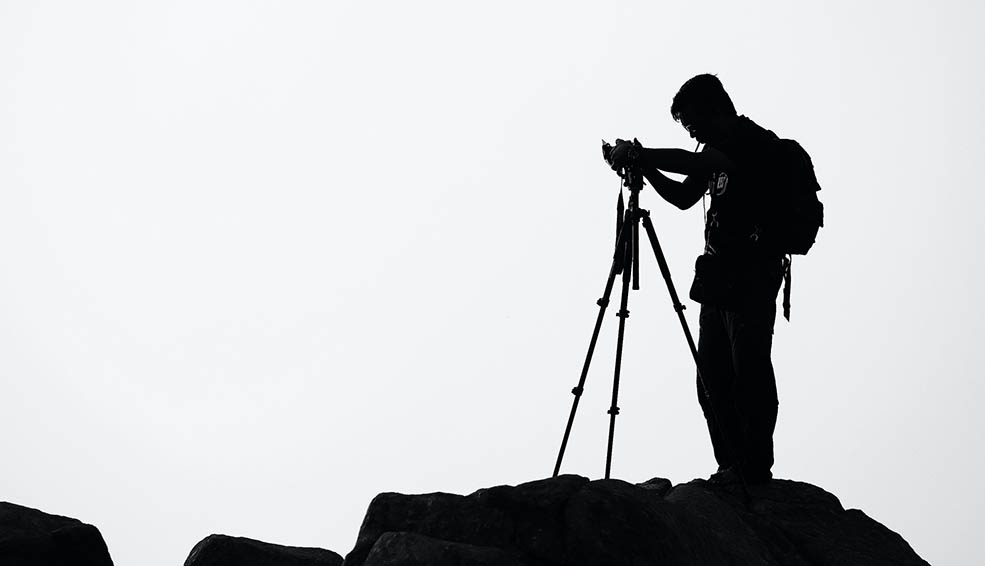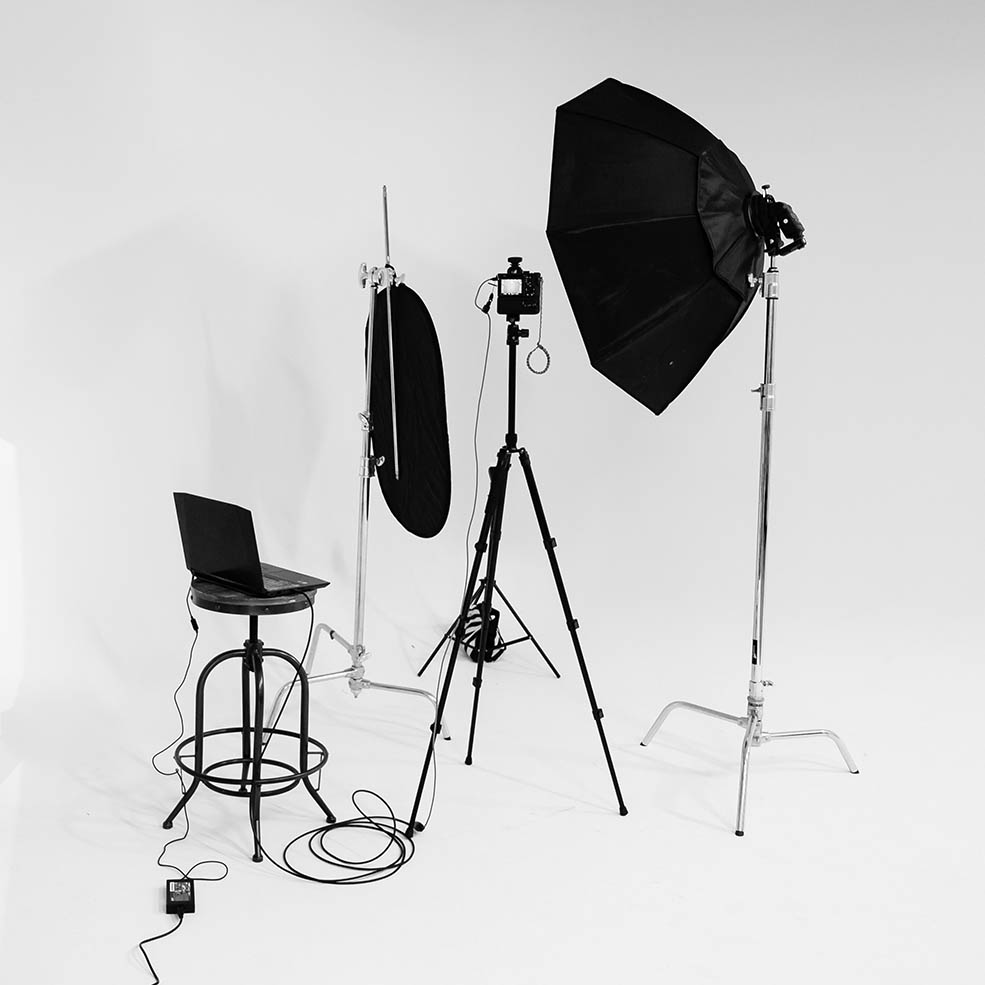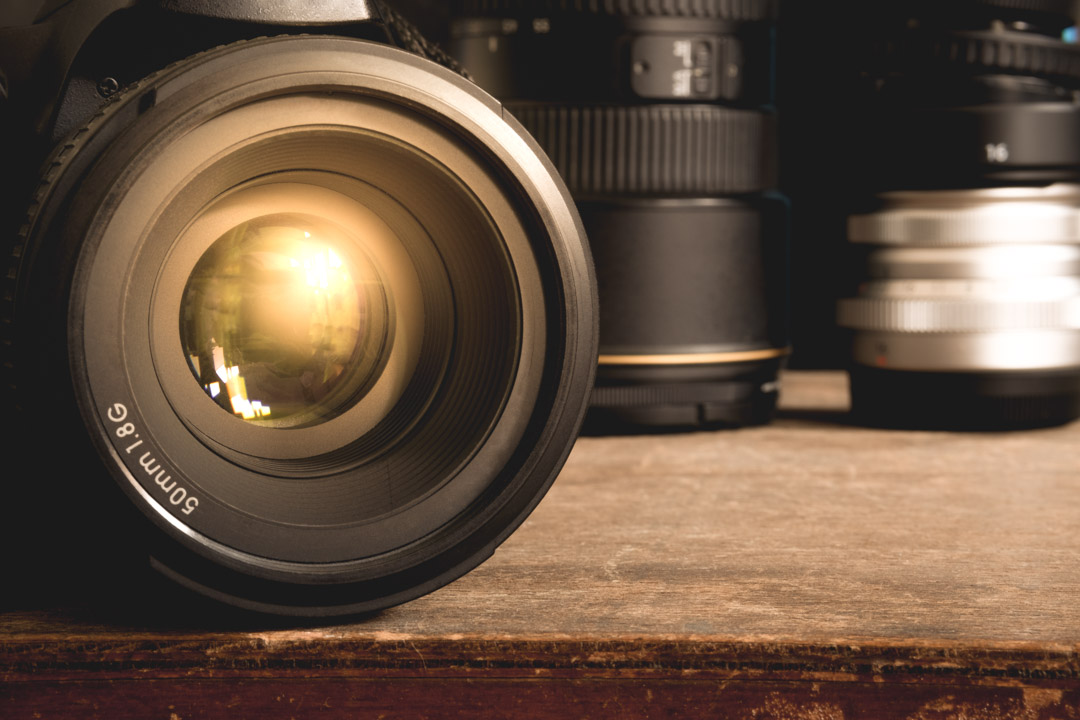Essential Equipment For Stock Photography
Ready to jump into stock photography but don’t know which camera gear to start off with?
Here you’ll find a beginner’s guide of essential items to help you capture professional-quality shots without breaking the bank. Whether you want to focus on creative portraits or outdoor landscape shots, I’ve got you covered.
01. Camera
Now that you’re ready to turn your passion into a business, you’re probably wondering: What kind of camera should I get? The simple answer is that it depends on the type of stock photography you want to get into. Different genres of photography need different equipment. Depending on your specialist genre, your list of accessories will vary.
For most types of stock photography (portraiture, fashion, lifestyle, etc.), a regular DSLR or mirrorless camera will suffice. These options not only have fabulous auto functionality, but they also allow you to adjust settings manually when necessary.
However, this doesn’t necessarily mean that you can get away with buying just any DSLR or mirrorless camera. Look for one with a minimum resolution of 12 megapixels to get more high-quality results.

Photo by Tembela Bohle
If you want to shoot sports or wildlife stock photos, you’ll need to invest in a camera with a high burst rate. In other words, it has to be able to shoot continuously at a fast pace.
Most entry-level cameras can take photos at a rate of 5 frames per second (or fps). However, to make sure you don’t miss any moment, you’ll want to have an option that can shoot 8 fps or more (some models can even shoot up to 24fps).
Furthermore, the camera you choose for sports or wildlife photography needs to have an excellent focusing system. Most entry-level cameras have a slow auto-focus a few focusing points, which may cause you to miss some shots.
In this case, you’ll need to invest in a higher-end camera that has the right amount of focus points and can focus fast. Such cameras are more expensive, but will definitely deliver the results you need.
02. Lenses
A high-quality lens is even more crucial than the camera itself. Just think about it: It’s pointless to have a 36-megapixel camera if your lenses produce blurry shots in the first place.
For general stock photography, starting out with a kit lens (or starter lens) is perfectly fine. However, it typically doesn’t offer the best quality, so it’s best to invest in a prime lens. Although it doesn’t zoom, it has better glass than a kit lens and creates sharper images. You can start out with either 35mm or 50mm since they closely resemble what the human eyes see.

Photo by Sarah Trummer
To shoot sports or wildlife photography, you’ll need a telephoto lens to let you zoom in on your subject from far away. These types of lenses can be expensive, but with a little research online, you might find good, used options for cheap. Autofocus versions are recommended for better performance. While they cost a little more than manual focus lenses, they let you capture shots more accurately.
There are plenty of options when it comes to telephotos, but you generally want to start with 200mm. If you want powerful magnification, you can go up to 400mm or more. The cheapest versions often have variable focal lengths (a.k.a. zoom) that include the Canon EF-S 55-250mm and the Nikon AF-P DX 70-300mm. Although they start at 50mm and 70mm, which aren’t suited for sports or wildlife, they can zoom up to 250mm and 300mm, which are perfect for what you need.
If you want to get into specialized stock photography such as macro photography, then you’ll need a macro lens. It allows you to shoot extreme close-up shots of subjects such as flowers, insects, and other small objects.
Macro lenses vary in focal lengths, meaning you can get 35mm, 50mm, or even 100mm options. If you want to get really close to your subject, then a 35mm (or shorter) would be perfect. Meanwhile, if you’re more comfortable shooting from farther away, then you can get a 100mm or longer.
If you don’t feel like buying a dedicated macro lens, you can also convert your regular lens into one by using attachments. The most common ones people use include bellows, reversing rings, and extension tubes. These add-ons cost less than a hundred dollars, so they’re perfect if you want to do macro photography on the cheap.
Ideally, you want to have access to most of these lenses to help you shoot a gamut of subjects for stock photography. But you can always start with a kit lens and prime lens at first. After all, they’re versatile and relatively cheap. As you earn more from your business, feel free to start adding new optics to your collection.
03. Tripod
Now that you have a DSLR, it’s time to get rid of your plastic tripod. Buy an aluminum or carbon fiber tripod since they’re more stable and are harder to break even under a heavy load. You should also consider buying a tripod head specifically designed for your type of photography.

Photo by Pok Rie
For most types of photography, a ball head tripod is preferable. It lets you move your camera quickly and smoothly at any angle and lock it in place to keep it stable.
If you have a heavier camera and occasionally shoot video, then a pan-and-tilt tripod is best. This type has a handle that lets you position your camera into whatever angle you want.
When shooting sports or wildlife with a telephoto lens, use a gimbal head. This style is built to handle long, heavy lenses. It attaches to the lens body and is designed to let the camera swivel smoothly to let you capture moments on the fly.
04. Lights
Once you get into commercial photography, working with natural light just isn’t enough, anymore. To make your stock photos look more professional, consider investing in lighting equipment.
For almost all types of photography, the most crucial piece of lighting equipment you can get is an external flash (a.k.a. speedlite). Since it swivels, it allows you to direct the beam that comes out of it in almost any direction. Bouncing off the light creates a more natural look. In contrast, the direct burst from your pop-up flash can make photos appear flat and unappealing.
Speedlites can be expensive, but you can still find affordable ones if you know where to look. Use them to add light or fill in unappealing shadows in backlit subjects. These devices can also be detached from your camera and used as “slaves” for wireless operation.
Once you gain enough experience using flash, think about investing in a strobe light. Apart from producing more light than regular speedlites, strobes also have a better refresh rate. This means that you can shoot a sequence of photos rapidly without having to recharge.
For stock photos that require you to shoot in a studio, you’ll need at least one softbox to light your subject. Considered a light modifier, this spreads the beam coming from your light source to achieve a more soft and natural glow.

Photo by Brett Sayles
05. External hard drive
As a hobbyist, it’s acceptable to save files onto your computer alone. But once you enter the stock photography business, it’s wise to back up files with an external hard drive.
Organizing files is essential in stock photography, especially if you have hundreds (if not thousands) of photos to deal with. Use an external hard drive and save copies of your images. If any of them get lost or corrupted, at least you’ll always have another set of files to work with.
These days, you can get 2 terabyte hard drives for less than $100. But if you’re the type of photographer who always travels, consider getting waterproof/shockproof options. These can cost as much as a few hundred dollars, but having that extra security for your files is worth the investment.
06. Camera bag
Now that you have a variety of photography equipment to bring around with you, you’ll need a camera bag to transport and protect them. There are many options to choose from depending on your specialty.
If you like shooting in the streets with minimal gear, then a shoulder camera bag would be preferable. Since its always right next to your hip, it allows you to access your equipment on the go. The only downside is that the constant weight can hurt your shoulder after a long day.
For outdoor photography that requires a lot of hiking, consider getting a camera backpack, instead. It may not be as accessible as a shoulder bag, but it’s more comfortable and has more space for equipment.
When traveling with big equipment such as strobes and heavy lenses, using a rolling case is the best option. The wheels let you easily transport your gear no matter how heavy they are. The hard case also makes sure they’re protected even when they get tumbled around in transit.
Purchasing new gear can be overwhelming, but it helps to remember that you don’t have to buy equipment that you won’t necessarily use in your genre of stock photography. Another important takeaway is that you don’t have to buy everything all at once. Save up some money by starting with the most essential gear first. As you start earning from your stock photography, you can begin updating the rest of your gear until you have everything you need.




